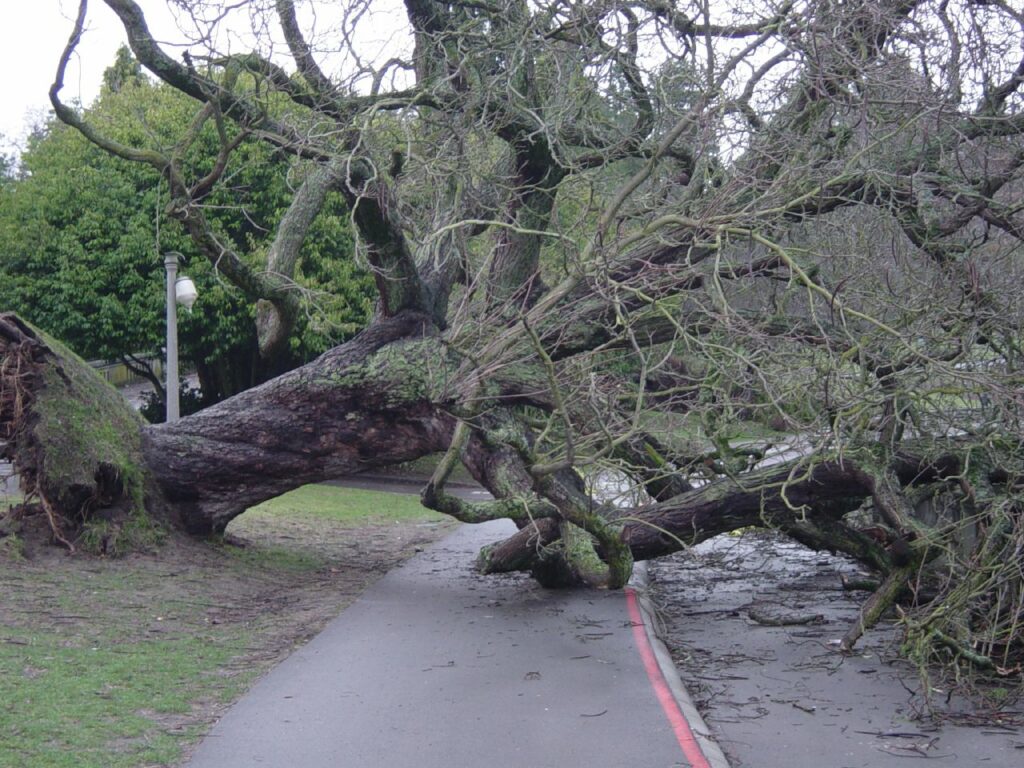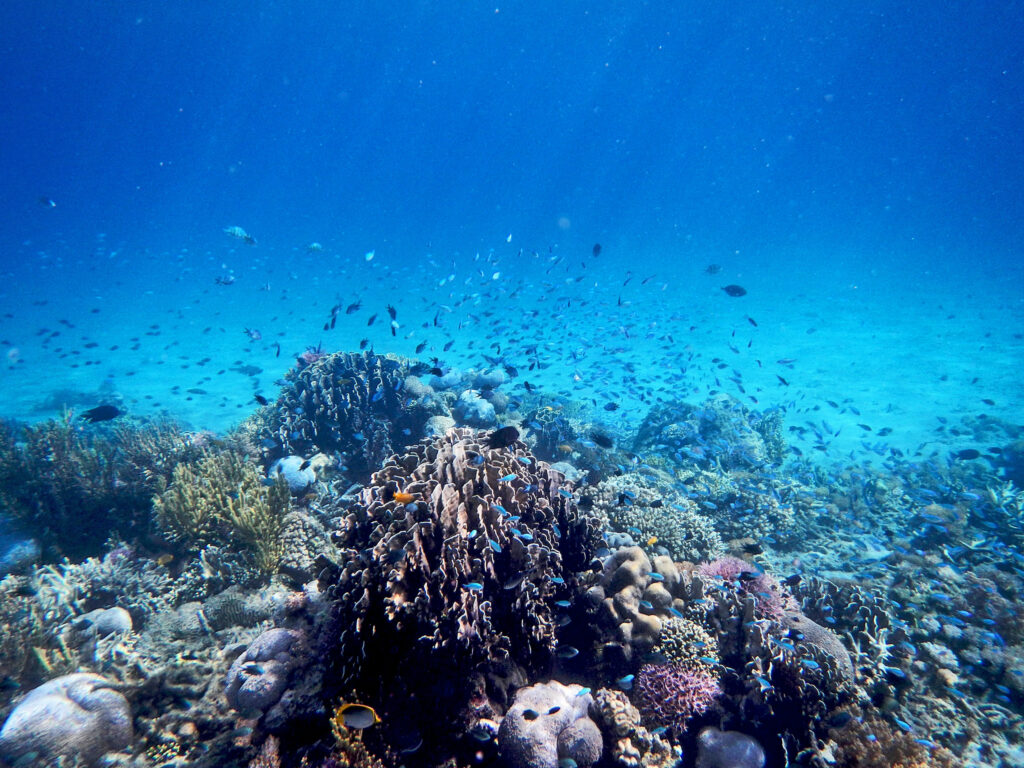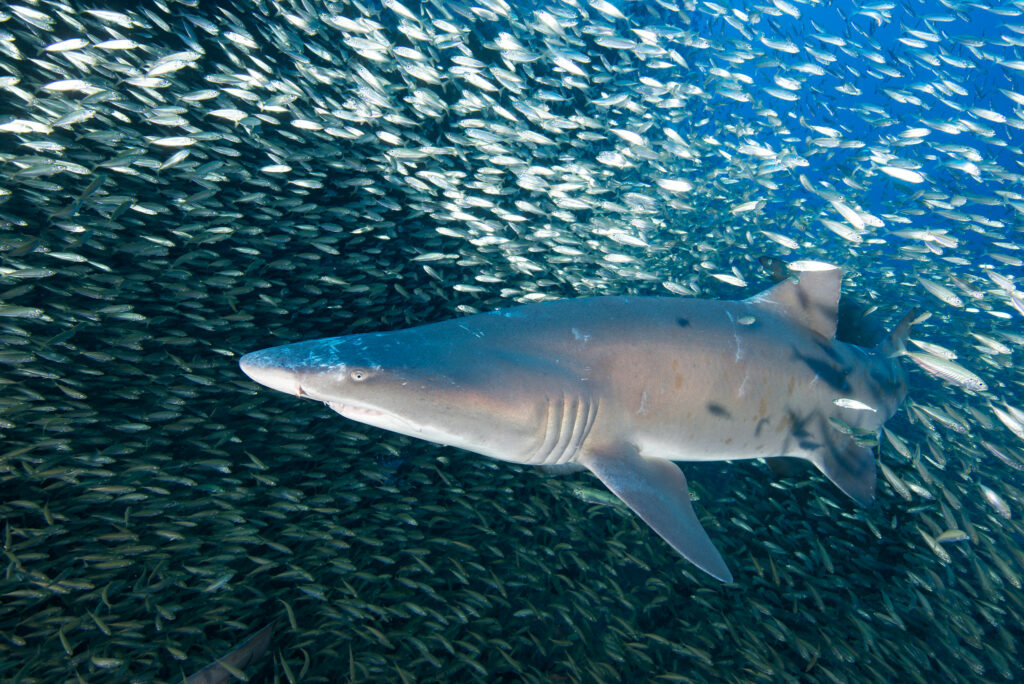Climate change
Climate change is weakening trees. Conditions such as extreme heat and drought can impact tree growth, potentially encouraging the formation of shallow root systems. These conditions can also increase the chances of tree diseases thriving. This, along with the potential impact of development, such as road management which damages root systems, is reducing the resilience of trees to stresses such as adverse weather, increasing the likelihood of storm damage.

A vulnerable coral species, the pink sea fan, may be likely to spread northwards due to climate change. The species, found in shallow waters from the western Mediterranean to north-west Ireland and south-west England and Wales, is a species of principal importance in England and Wales. A new study, run by the University of Exeter, found that there will likely be an increase in suitable habitats for this species northwards, with existing habitats remaining suitable over the next 60-80 years. The results of this study could hopefully be used to identify areas that are a priority to protect the coral.
Policy
Peatlands are still being burnt, despite the new government ban. Peatlands deeper than 40cm are protected from burning by the new ban introduced last year. However, the RSPB has sent the government evidence of 79 fires that they believe are in breach of these new regulations. Both the RPSB and Greenpeace are calling for a blanket ban on the burning of all peat, regardless of depth. Peatland deterioration has been linked with the release of almost 3.7 million tonnes of carbon dioxide each year in the UK.
Research
New research has shown that sounds can be used to monitor the health of coral reefs. Monitoring the pops, clicks and clacks produced by fish and other marine life can be a non-intrusive, inexpensive and efficient method of tracking the state of coral reefs. Reduced biodiversity in degraded communities results in less activity, and so these reefs do not sound as loud compared to healthy ones. By monitoring decibel levels and comparing soundscapes using underwater microphones, researchers may be able to plan conservation interventions and monitor restoration projects on a long-term basis.

A variety of targeted conservation approaches are needed to protect UK bumblebee species. A study, using 10 years of data from Bumblebee Conservation Trust’s citizen science scheme BeeWalk, has found that a ‘one-size-fits-all’ approach to bumblebee conservation may not be an effective method, as there is a wide range of differences between species in the types of habitats they are associated with. Instead, conservation efforts would be better served by being carefully tailored to particular species.
Diatoms, the most important producers of plant biomass in the ocean, could decline due to ocean acidification. These calcifying organisms were previously thought to benefit from ocean acidification as they rely on silica rather than calcium carbonate to build their shells, however, a new study suggests diatom populations could drastically decline. Ocean acidification causes the silicon shells of these species to dissolve more slowly, causing them to sink to deeper water layers. In these layers, these shells chemically dissolve and are converted back to silica. Because of this, the abundance of silica is reduced in the surface layers where new shells are formed, resulting in a decline in diatom populations.
Conservation
Three BioBlitz events held in New South Wales have recorded the recovery of flora, fauna and fungi after the Black Summer bushfires. The UNSW project has found positive signs of recovery; at the latest BioBlitz a total of 2,200 individuals belonging to 823 species were recorded, nine of which are threatened. These citizen science events are proving incredibly useful tools for scientists and researchers to study the prevalence of species across large areas.
The Marine Stewardship Council, an organisation that certifies fisheries under its blue tick sustainability label, has ordered an independent investigation into allegations of shark finning on tuna vessels in certified Pacific fisheries. Between 2019 and early 2020, reports state that silky sharks and a black-tipped reef shark had their fins cut before being discarded overboard. Both species are classified as Near Threatened.

In other shark news, Grey nurse sharks are thought to be thriving at a popular dive site in Australia, but there are calls for more research into this critically endangered species. Only around 2,000 individuals are estimated to be left in the wild, following persecution during the 1960s and 70s inspired by the movie Jaws. Bass Point, where a large number of grey nurse sharks were counted, was removed as a critical habitat site in 2013. Conservation biologist Adam Stow, who has been studying this species for nearly 20 years, says more research is needed into the impact of climate change on their movements.
Work begins to turn 99,000 hectares in England into ‘nature recovery’ projects. Five landscape-scale projects in the West Midlands, Cambridgeshire, the Peak District, Norfolk and Somerset are aiming to help tackle wildlife loss and the climate crisis, while also improving public access to nature. The proposed projects range from transforming farmland into chalk grassland to restoring dewponds and sustainably managing wetlands.
Extinctions
According to a new report, two-fifths of Britain’s butterfly species are at risk of becoming extinct. The Butterfly Conservation wildlife charity has released a ‘Red List’, which includes half of British butterfly species, a 26% increase from 10 years ago. There are a number of factors causing this decline but the main ones highlighted have been habitat loss, land-use change and climate change.

